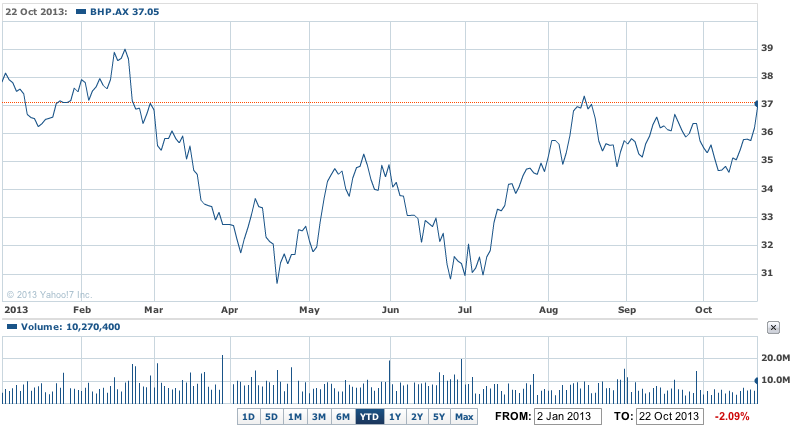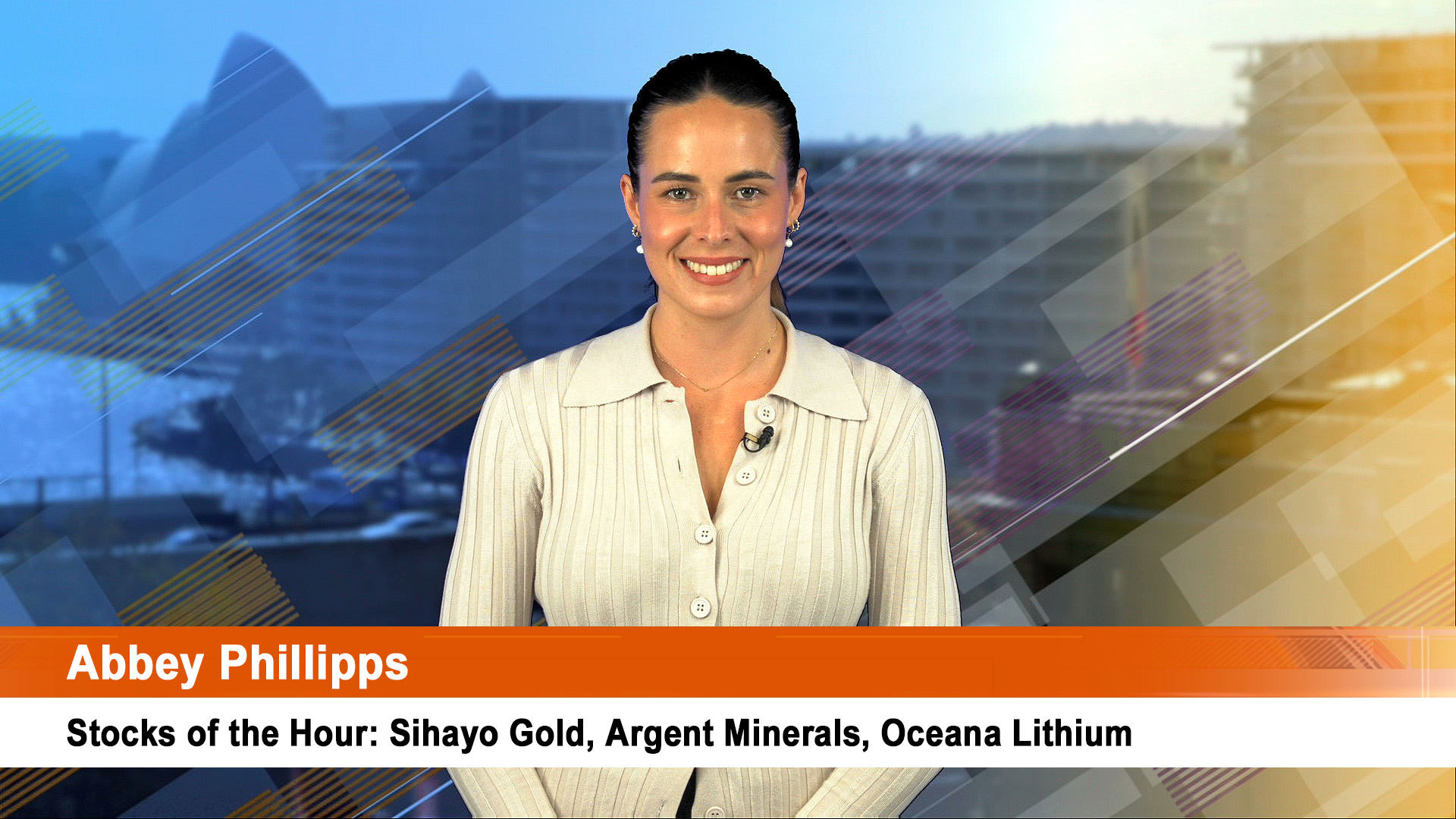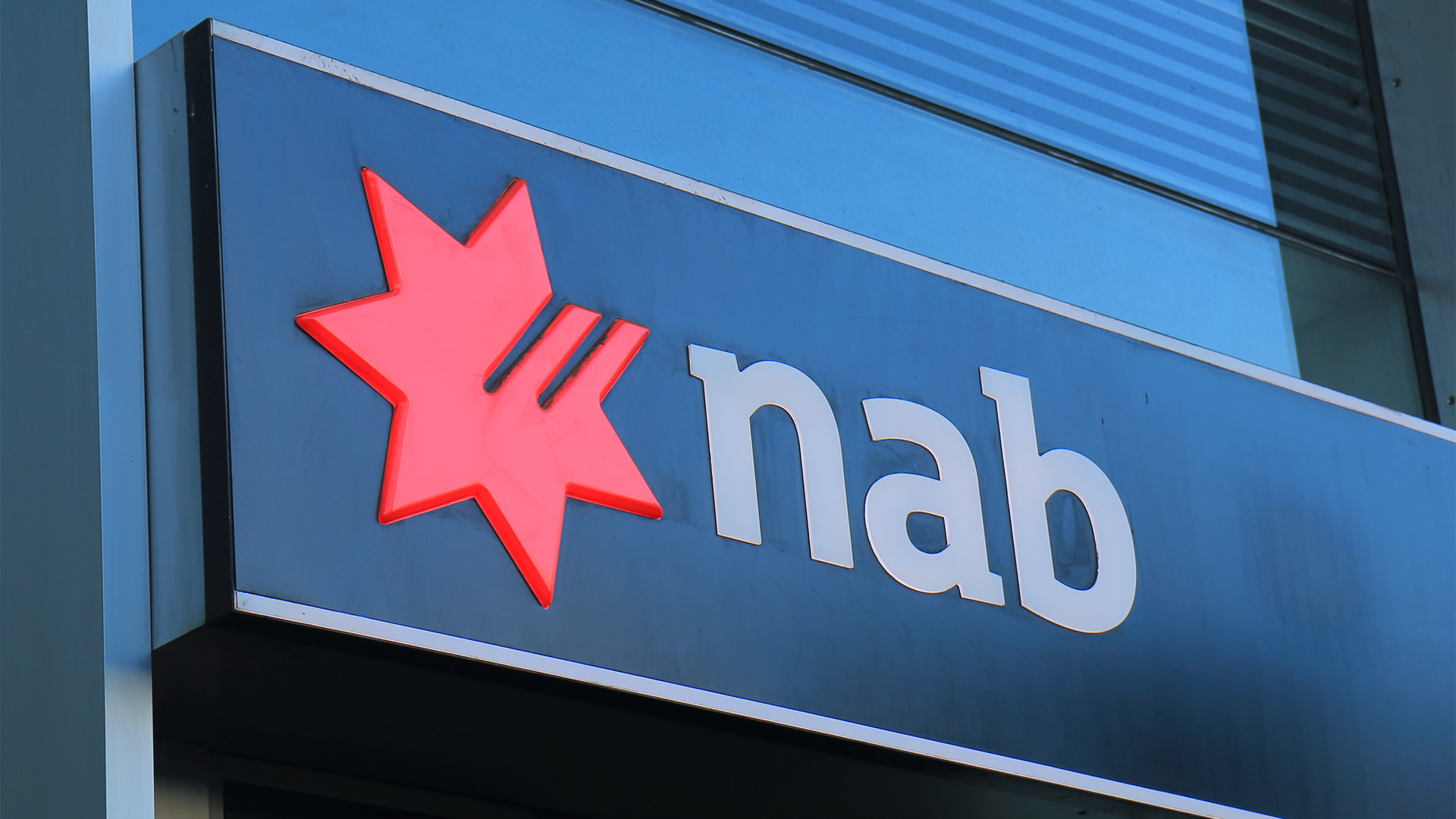BHP Billiton (BHP) has added weight to the story that the iron ore sector has been underestimated by many investors, revealing a sharp jump in third quarter production and sales as well as a small increase in its financial year guidance.
BHP’s report confirms the solid trend that emerged from last week’s quarterly reports from Rio Tinto (RIO) and Fortescue Metals Group (FMG). They all in turn support the news that Chinese steel production remains buoyant (as do world iron ore prices), supported by solid demand from other markets such as Japan.
The production report helped lift BHP shares yesterday on the ASX where they closed up 2.3% or more than 80c at $37.05, the highest since August.
BHP YTD – BHP surprises with iron ore upgrade, shares jump

The strong support for BHP shares yesterday enabled our market to resist a weakening trend from offshore.
The overall market was up 0.4% at a new five year high of 5,373.1 for the ASX 200.
At the same time there was also good news from the company’s copper, petroleum and coal businesses, all of which seem to be on track for a solid year.
The company said in its September quarter production report, issued yesterday, that output of iron ore jumped 23% in the three months from the same period in 2012 (which was depressed by a slide in sales as world prices fell and Chinese buyers cutback their purchases).
The company said output in the quarter was 48.8 million tonnes. Petroleum product output rose 2% year on year to 62.7 million barrels of oil equivalent. Coking coal output jumped 14% year-on-year to 10.2 million tonnes and thermal (steaming) coal production was up 3% to 19.6 million tonnes. Copper production was up 6% to 403,300 tonnes.
As solid as these figures were, it was the company’s comments on its key iron ore business which surprised the market.
BHP said the continuing ‘optimisation‘ (i.e. getting greater efficiencies) of production systems in its Pilbara iron ore mines and higher output from a new mine has helped it to raise forecast 2014 production of iron ore to 212 million tonnes, up five million tonnes
In contrast, its full-year production forecasts for the other key sectors such as oil and gas, coal and copper were left unchanged.
BHP said that initial production from the new Jimblebar mine and the so-called de-bottlenecking measures and greater efficiencies (such as mobile crushers) would boost iron ore capacity to an estimated 220 million tonnes.
The Jimblebar mine will be able to produce 35 million tonnes a year at full capacity (worth close to $US4 billion in extra revenue) at current prices of $US130 a tonne. It was finished six months ahead of schedule and is due to hit full capacity by the end of June 2015.
BHP said it is looking at low cost options to increase Jimblebar’s capacity to 55 million tonnes a year, which will be a key part of boosting capacity to 260 million to 270 million tonnes a year.
On top of the productivity gains in the iron ore business, BHP pointed to its continued cost cutting. It says it had chopped its capital and exploration spending estimate for 2013-14 by 25%. BHP said its share of iron ore production (including Samarco in Brazil) is 192 million tonnes of ore and pellets.
In the petroleum division, BHP said first production was achieved at Macedon, Bass Strait Turrum and North West Shelf North Rankin B Gas Compression (all Australia). "In addition, the Newcastle Third Port Stage 3 project (Australia) achieved mechanical completion. These projects will not be reported in future quarterly reports. The remaining 12 major projects are tracking to plan," BHP commented.
BHP Operational Review for the Quarter Ended 30 September 2013
BHP’s CEO Andrew Mackenzie said in yesterday’s statement: “Our pursuit of productivity gains and operating excellence is already yielding strong results. There is no better example than in our Iron Ore business, where the deployment of mobile crushing units and the continued debottlenecking of the supply chain has underpinned a five million tonne increase in Western Australia Iron Ore’s production guidance for the 2014 financial year.
“We continue to build on the substantial US$2.7 billion reduction in controllable cash costs delivered in the 2013 financial year with strong momentum maintained in the first quarter. In addition, a 25 per cent reduction in capital and exploration expenditure to US$16 billion in the 2014 financial year has significantly increased internal competition for capital.
"Our rate of expenditure will decline again next year and if our investment criteria cannot be met in any one project, product or geography, we will redirect our capital elsewhere or we will not invest.
“Active management of our portfolio has also delivered significant value for our shareholders. In this financial year completed transactions have already delivered proceeds of US$2.2 billion, further strengthening our solid A balance sheet.
"With strong production growth and our overriding commitment to substantially increase free cash flow, we are well positioned to grow returns to our shareholders," he said.
The big question now for investors is the sustainability of the current strong market conditions for iron ore and the level of steel production in China.













